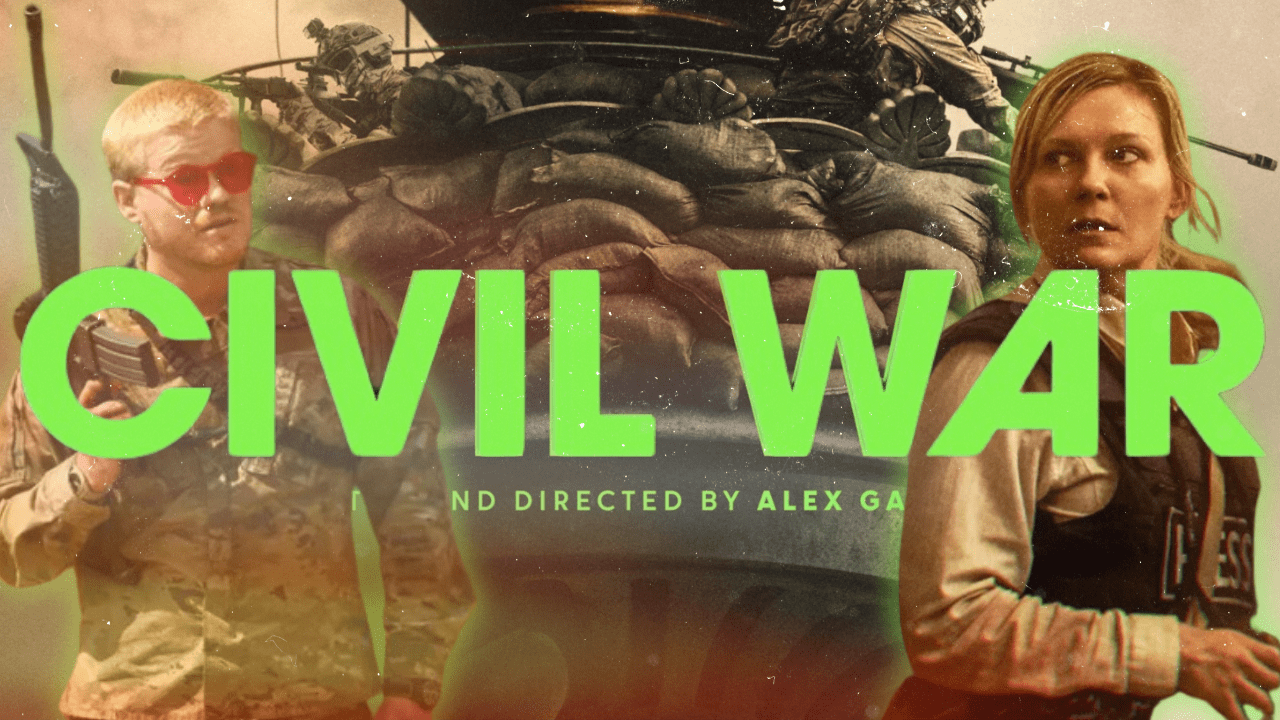Civil War | Film Review
Civil War might just be Alex Garland’s best film since Ex Machina. This A24 production follows a group of photojournalists documenting the violence of a near-future American Civil War. The film dives deep into the chaos and destruction, providing a raw, immersive experience that feels all too real. Check out the full Civil War film review below.
Plot and Direction
Civil War centers on a group of photojournalists navigating the brutal landscape of a fractured United States. The story isn’t bogged down with overt political commentary, allowing the narrative to focus on the human experience amid the violence. Garland, known for his acclaimed works Ex Machina, Annihilation, and Men, brings his signature style to this project. Despite mixed receptions to some of his previous films, Civil War has garnered largely positive reviews, highlighting Garland’s directorial prowess.
Cinematic Techniques
One of the most intriguing aspects of Civil War is its use of the DJI Ronin 4D camera. This choice contributes significantly to the film’s immersive feel. The Ronin 4D, a prosumer camera costing around $7,000, includes a comprehensive stabilizer, allowing for close, dynamic shots that traditional cinema rigs often can’t achieve. This approach places the audience directly in the action, enhancing the sense of immediacy and reality. The use of this camera creates a grounded aesthetic, avoiding the hyper-elevated feel of more expensive cinema cameras.
Cast and Performances
The cast delivers strong, natural performances. Kirsten Dunst leads as the central character, with Wagner Moura, Stephen McKinley Henderson, and newcomer Cailee Spaeny rounding out the main group. The film’s strength lies in its ability to make the audience feel like they are part of this photojournalist team, witnessing the events unfold firsthand. Despite the film’s under-two-hour runtime, which limits the depth of character development, the actors’ performances make their bonds believable and impactful.
Thematic Elements
Garland handles the film’s thematic elements with finesse. Civil War avoids becoming a satirical or overly specific take on American politics, opting instead for a more universal exploration of violence and its effects. The film’s brutal violence is purposeful, each act contributing to the story’s message rather than serving as mere spectacle. This is emphasized through the use of still photographs interlaced within the motion picture, a technique that highlights the stark reality of the moments captured.
Representation of Violence
The film’s relationship with violence is complex and thought-provoking. It explores humanity’s inescapable connection to violence, how we glamorize it, and how we become desensitized to it. A powerful line from Dunst’s character encapsulates this: as a photographer, she captures violence hoping someone else will intervene, highlighting the passivity and helplessness often felt in the face of such atrocities. Civil War questions the justifications for violence and the cyclical nature of conflict, presenting these themes in a deeply personal and human context.
Sound and Score
The sound design and score of Civil War are noteworthy. Garland uses moments of complete silence to force the audience to confront the on-screen horrors, creating a haunting effect. The juxtaposition of upbeat folk songs with scenes of death and destruction underscores the film’s themes of irony and the ways humans cope with violence. This contrast enhances the emotional impact and adds another layer to the film’s storytelling.
Conclusion
Civil War may be described as an anti-war film, though it acknowledges the inherent difficulty in creating such a film without glamorizing violence. Garland and his team succeed in presenting violence in a way that feels real and deeply personal, avoiding the pitfalls of glorification. The film’s cyclical nature of violence is mirrored in the generational shift among the photojournalists, symbolizing the ongoing presence of conflict.
Final Thoughts
The ending of Civil War is bound to be divisive. For some, it may not resonate, but for others, it will feel like the natural conclusion to the film’s central themes. Garland wraps up the narrative in a way that leaves the audience contemplating the film’s messages long after the credits roll.
Overall, Civil War is a bold, ambitious film that showcases Garland’s talent as a director and storyteller. It combines powerful performances, innovative cinematography, and a poignant exploration of violence, making it a standout project in his filmography. Whether you are a fan of traditional action movies or seeking a film rich with symbolism and metaphor, Civil War offers a compelling cinematic experience.
More Videos HERE
Full Written Reviews HERE




